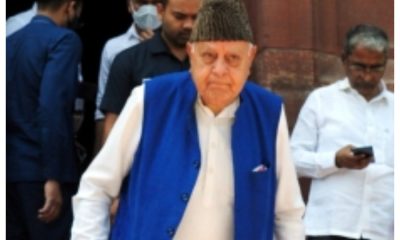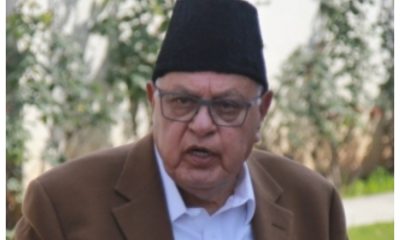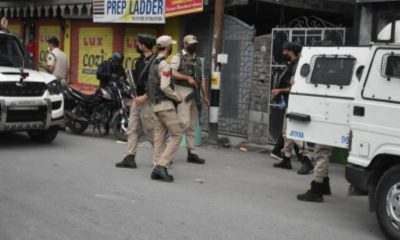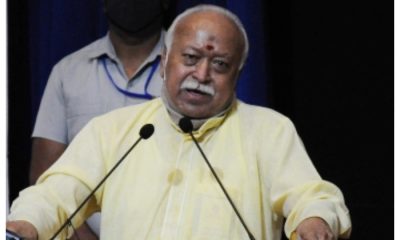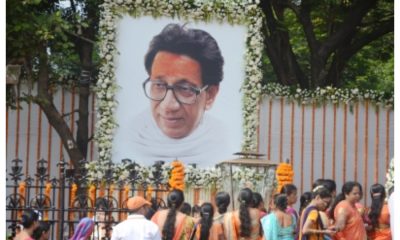National News
Why Farooq Abdullah is Villain No. 1 in the eyes of Kashmiri Pandits?
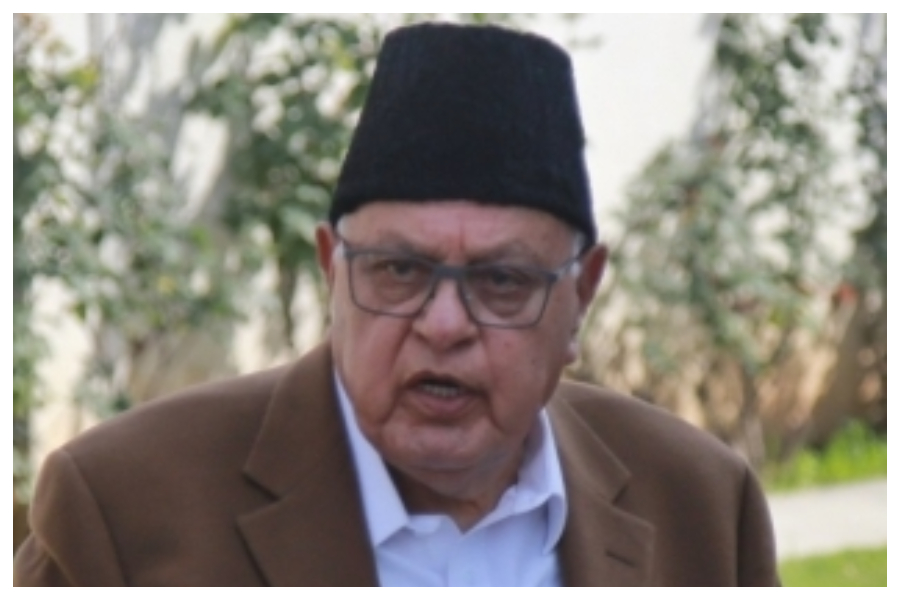
A majority of Kashmiri Pandits view Farooq Abdullah, the former Chief Minister of the erstwhile state of Jammu and Kashmir, as the main culprit behind the atrocities committed against them.
They believe that he was responsible for all the events that preceded the mass exodus of the minority community and the advent of terrorism in the Valley.
Farooq Abdullah was the Chief Minister from November 7, 1986 to January 18, 1990. It was this period which saw Kashmir gradually falling down the precipice, and despite warnings by intelligence agencies the indifference seemed insurmountable.
In February 1986, massive communal attacks occurred in South Kashmir. Muslim mobs looted and plundered or destroyed the properties and temples of Kashmiri Pandits.
Ghulam Mohammad Shah, the brother-in-law of Farooq Abdullah, was the Chief Minister then. He failed to curb the violence and called in the army to curb the mayhem.
His government was dismissed in March 1986 by the then Governor Jagmohan. It was reported that Mufti Sayeed, then a Congress leader, had instigated the violence as he was keen to be the Chief Minister and replace Shah.
Rajiv Gandhi was the Prime Minister then who later gave Sayeed a seat in the Rajya Sabha and also made him a Union Minister. In November 1986, after months of hectic parleys, Rajiv Gandhi and Farooq Abdullah signed an accord and the latter was reinstated as the Chief Minister.
It was this period that saw the build up to the pogrom.
Ramesh Raina, President (All India Kashmiri Samaj (AIKS), said, “This 1986-1989 period is significant in the history of Kashmir, which is often ignored. The exodus did not happen overnight. There was full preparation for this. Abudllah fooled the nation with this accord. You can say he was incompetent and he didn’t have any control, or you can say he was totally involved, knew everything and let things build up.”
Panun Kashmir leader Ramesh Manvat said, “Muslim Conference, the original avatar of ‘National’ Conference started as a group to fight for the rights of Muslims in Kashmir in 1930s; turned their tide against then Maharaja Hari Singh; nourished the dream of an Independent Kashmir (following their call of ‘Quit Kashmir’ in 1940s) — leading to the dismissal of its founder Sheikh Mohammad Abdullah in 1950s … The legacy of communal Muslim mindset and inconsistencies in National Conference’s approach towards minorities — Kashmiri Pandits and the ‘idea of India’ they represent have been carried forward by Farooq Abdullah, during his long reign as CM of J&K.
“Farooq Abdullah, as a tacit supporter of the happenings on the ground was busy playing golf and giving joy rides to Bollywood heroines, before finally choosing to run away to London when Kashmir was burning and a full-blown genocide of Pandits was taking place.”
Former Director General of Police of Jammu and Kashmir, Shesh Paul Vaid, tweeted on March 16: “Many people in the country do not know this #KashmirFiles fact: first batch of ISI trained were arrested by J&K Police but ill-thought political decisions had them released and the same terrorists later on led the many terrorist organisations in J&K.”
Vaid was the DGP of J&K from December 31, 2016 till September 6, 2018. He also added in his tweet: “Some of the notorious names: Mohammed Afzal Sheikh of Trehgam Rafiq Ahmed Ahangar Mohammad Ayub Najar Farooq Ahmed Ganai Ghulam Mohammed Gujri Farooq Ahmed Malik Nazir Ahmed Sheikh Ghulam Mohi-Ud-Din Teli. Could this have been possible w/o the knowledge of the Union Govt of 1989?”
The fact that the intelligence agencies had repeatedly been alerting about the hordes of Kashmiris, especially youth, crossing over to PoK for arms training, went largely unheard of.
A lot of kidnappings were taking place, especially of the government employees, a maximum number of them were Kashmiri Pandits, but no action was taken.
Threats were openly given in local newspapers, posters were pasted and hit-lists made, but the administration seemed lifeless. The then Governor Jagmohan had mentioned the situation to then Prime Minister Rajiv Gandhi through letters dated April 20, 1990.
“Need I remind you that from the beginning of 1988, I had started sending ‘Warning Signals’ to you about the gathering storm in Kashmir? But you and the power wielders around you had neither the time, nor the inclination, nor the vision, to see these signals. They were so clear, so pointed, that to ignore them was to commit sins of true historical proportions,” Jagmohan wrote in the letter.
His fear came true and the minorities and moderates had to bear the brunt even as Farooq Abdullah left the Valley for London soon after.
“Fifty per cent Kashmiri Pandits fled on January 19. It did not happen suddenly. Farooq Abdullah knows all. He has to answer,” said Ramesh Raina.
“Farooq Abdullah ran away to London while the Valley was burning. He was the founder member of Alfata, JKLF. While he was in chair, youth were freely transported to Pakistan through the LoC. How was it possible without his knowing?
“Why were terrorists being released from jail then? Why did he resign overnight and the next day the exodus happened? It was all planned because then all would have come to his head. So he resigned. But could the exodus have happened without a plot behind it,” he asked.
While Farooq Abdullah was in J&K, Mufti Mohammad Sayeed was the Home Minister at the Centre. His role as HM is also questioned by the community.
Surinder Kaul, the chief of Global Kashmiri Pandit Diaspora, said, “After we were forced to flee from Kashmir, we staged protests. I remember one meeting with then Home Minister Mufti Sayeed in 1990. All he had to say was ‘yes, this is not ok’.
“He had no answers to our questions. We told him, ‘why the local police and intelligence network had just vanished. Why was no one doing their work? Why was there no security’. But he just kept mum. That day I realised that the state and Central power system of our country had collapsed and no one was there to help us.”
“Farooq Abdullah has double standards. He always speaks one thing in Delhi and another in Kashmir. He never provided good governance. He protected the elite and never worked for the common people. To keep his fiefdom alive, he divided the communities. When Kashmiri Pandits were being killed, maimed, women were gang-raped, loot and arson had become the order of the day, where was he,” Kaul asked.
There have been times when Farooq Abdullah had borne the brunt of Kashmiri Pandits’ ire. In 2019, when he tried to meet a group of Kashmiri Pandits, who had come to Srinagar on a pilgrimage visit, he had to make a hastened retreat after slogans were raised against him.
Kashmiri Pandits feel that if Farooq Abdullah had taken strong steps, Kashmir would not have fallen to terrorism and the minorities would not have been tormented and forced out.
The community is seeking answers, and wants a judicial commission be instituted and Farooq Abdullah to be the first one to be investigated.
National News
241 dead, one survivor as Air India Dreamliner crashes after takeoff from Ahmedabad: Air India
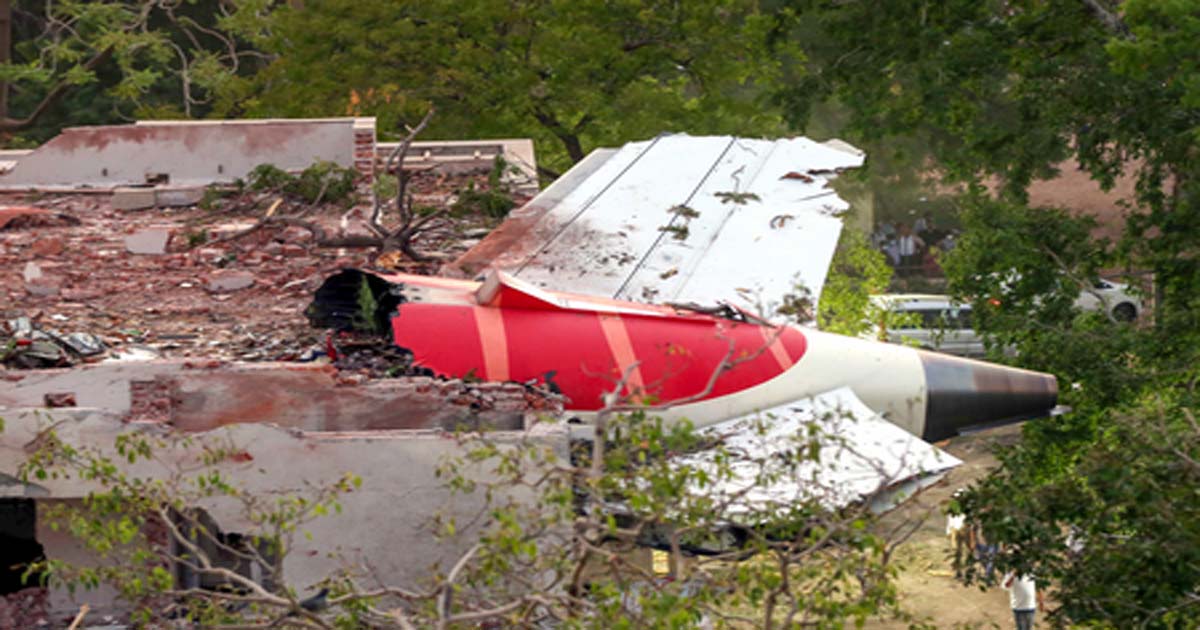
New Delhi, June 13: In what is being described as one of the worst aviation disasters in Indian history, an Air India Boeing 787-8 Dreamliner carrying 242 people crashed shortly after takeoff from Ahmedabad airport.
The aircraft, operating as Flight AI-171 from Ahmedabad to London Gatwick, plunged into a residential complex near BJ Medical College, killing 241 people on board.
The ill-fated flight had 230 passengers, 10 cabin crew, and two pilots. According to officials, only one person, a British national of Indian origin seated in 11A, survived the crash and is currently undergoing treatment at a local hospital.
The aircraft took off from Sardar Vallabhbhai Patel International Airport at 1.38 p.m. (IST) on Thursday before losing control moments later and crashing into a densely populated area, igniting a massive blaze and triggering emergency response teams across the city.
Air India confirmed the accident in an official statement on X: “UPDATE: Air India confirms that flight AI171, operating from Ahmedabad to London Gatwick on 12 June 2025, was involved in an accident. The 12-year-old Boeing 787-8 aircraft departed from Ahmedabad at 1338 hrs, carrying 230 passengers and 12 crew. The aircraft crashed shortly after take-off. We regret to inform that, of the 242 aboard, there are 241 confirmed fatalities. The sole survivor is being treated in a hospital.”
The airline also shared the nationality breakdown of passengers: 169 Indian nationals, 53 British, seven Portuguese, and one Canadian.
“Air India offers its deepest condolences to the families of the deceased. Our efforts now are focused entirely on the needs of all those affected, their families and loved ones. A team of caregivers from Air India is now in Ahmedabad to provide additional support,” the statement added.
The national carrier has pledged full cooperation with authorities investigating the cause of the crash and has established dedicated helplines for families seeking information.
Domestic callers can reach the support team at 1800 5691 444, while international callers are advised to dial +91 8062779200.
Regular updates will be provided through Air India’s official website and its X handle.
National News
Plastic nurdle spill from sunken cargo ship reaches TN’s Dhanushkodi sanctuary, raising alarm
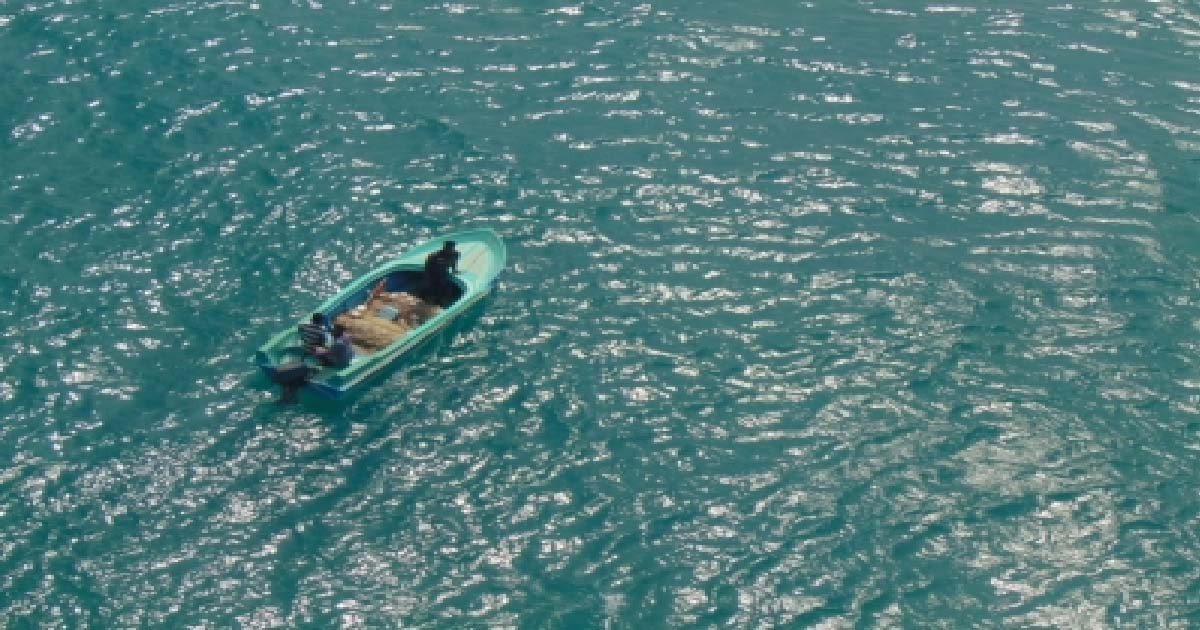
Chennai, June 10: A plastic nurdle spill from the sunken cargo ship MSC ELSA 3 has spread into the newly declared Dhanushkodi Greater Flamingo Sanctuary in Ramanathapuram district, threatening one of India’s most fragile coastal ecosystems.
The MSC ELSA 3, a Liberian-flagged vessel, sank off the Kochi coast a few weeks ago while carrying 640 containers, including 13 with hazardous materials, 12 with calcium carbide, 367 tonnes of furnace oil, and 84 tonnes of diesel.
The ship’s cargo manifest remains undisclosed, fuelling speculation about the full extent of environmental risk.
Dhanushkodi Sanctuary, located within the Gulf of Mannar Biosphere Reserve, supports 128 species of birds — including Greater and Lesser Flamingos — and is home to sea turtles, crustaceans, molluscs, and fish. Its dunes, marshes, and seagrass beds form part of the Central Asian Flyway for migratory birds.
The nurdles — tiny plastic pellets used in industrial manufacturing — resemble fish eggs and can be deadly to marine life. When ingested, they cause internal blockages, starvation, and often death. They also absorb toxins, entering the food chain and posing long-term health hazards.
About 80 bags, each weighing 25 kilograms, have reportedly washed ashore along a 12-km coastal stretch. Affected sites include the Dhanushkodi old church, Irattaithalai, Mugandharayan Chathiram, Gothanda Ramar temple, and Patchappatti village.
Carried by ocean currents from the Thiruvananthapuram-Kanniyakumari coast, the spill now threatens the adjacent Gulf of Mannar Marine National Park, home to vital coral reefs and seagrass beds.
Experts warn these habitats could be smothered by plastic debris, blocking sunlight and disrupting photosynthesis.
Ramanathapuram District Collector Simranjeet Singh Kahlon said, “We’ve identified between 15 and 30 nurdle bags along the coast. A special team has been deployed for cleanup, and additional teams are monitoring for further debris.”
He urged the public not to panic, stating that swift action was underway.
The disaster evokes memories of the 2021 X-Press Pearl incident in Sri Lanka, where 1,680 tonnes of nurdles led to mass marine deaths and crippled fisheries.
Studies showed severe impacts on plankton and larval life forms, threatening entire food chains.
Cleanup efforts in Ramanathapuram face challenges due to the nurdles’ buoyancy and small size, worsened by monsoon waves that break them into microplastics.
With the 61-day annual fishing ban nearing its end, fishermen fear reduced fish catches and consumer hesitancy could harm their livelihoods if the spill worsens.
Environmentalists are calling for urgent intervention, cargo transparency, and long-term containment measures to prevent irreversible damage to one of India’s most critical marine ecosystems.
National News
Eight Punjab and Haryana HC judges take lead to boost Kashmir tourism post Pahalgam terror attack
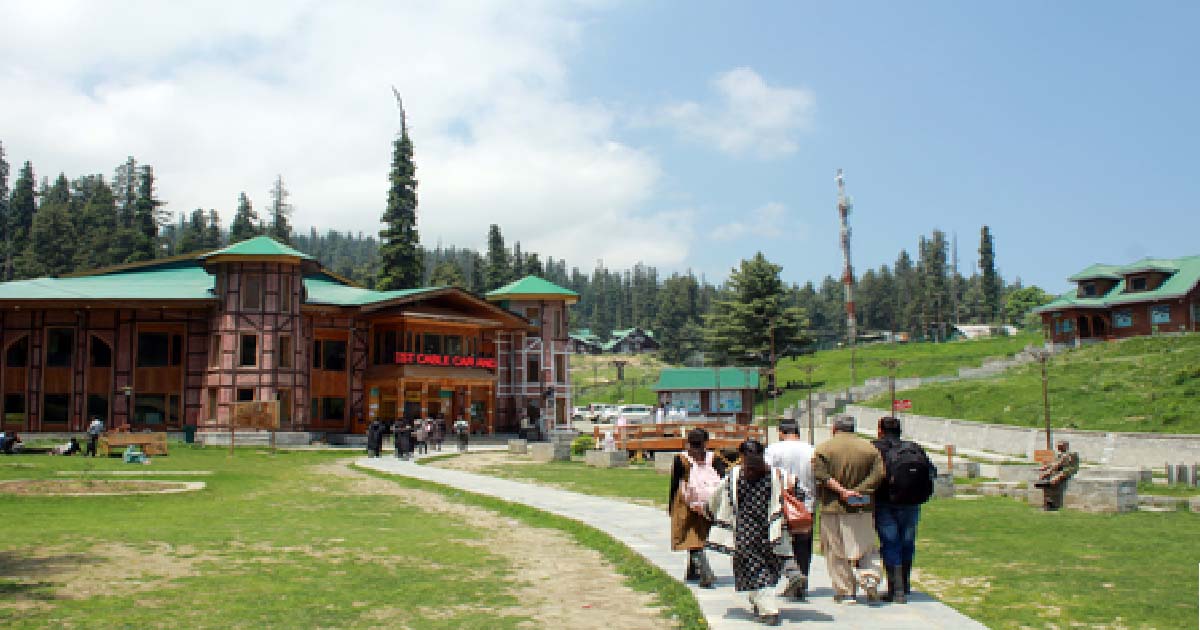
Srinagar, June 9: To give a boost to Kashmir tourism post Pahalgam terror attack, eight judges of the Punjab and Haryana High Court are visiting the valley along with their families.
The visit of the legal personalities along with their families carries a powerful message for the revival of tourism in Kashmir, which got shattered after the Pahalgam terror attack.
On April 22, Pakistan-backed terrorists of Lashkar-e-Kashmir (LeT) killed 26 civilians, including 25 tourists and a local pony owner.
The pony owner sacrificed his life while trying to protect the tourists from the bullets of the terrorists.
The terror attack caused outrage in the entire country, and to avenge the killings of innocent civilians, the Indian Armed Forces carried out airstrikes against terror infrastructure in Pakistan under Operation Sindoor.
In retaliation for India’s attack on terrorist infrastructure, Pakistan resorted to heavy mortar shelling on civilian facilities in Poonch, Rajouri, Baramulla, Kupwara and Bandipora districts.
Eighteen civilians were killed in Pakistan shelling, 13 of them in Poonch district, in addition to the destruction of scores of homes, shops, a temple, a mosque, a church and a Gurudwara.
The itinerary of the visiting high court judges includes visits to the Mughal Gardens of Nishat and Shalimar, Shikara rides on the Dal Lake, a visit to the historic Pari Mahal and buying a few handicrafts at the local market.
There could be no better omen for the revival of tourism in Kashmir than the decision of the honourable justices of the High Court to come here along with their families.
Coinciding with the visit of these dignitaries, local tour and travel operators and hotel owners are reporting a gradual rise in the tourist bookings that had virtually stopped after the Pahalgam terror attack.
Tour and travel operators and others connected with the tourist industry have expressed hope that the visit by the most respected legal dignitaries, like the high court judges, will restore confidence among visitors, both domestic and foreign, that Kashmir is a safe tourist destination.
-

 Crime3 years ago
Crime3 years agoClass 10 student jumps to death in Jaipur
-

 Maharashtra9 months ago
Maharashtra9 months agoMumbai Local Train Update: Central Railway’s New Timetable Comes Into Effect; Check Full List Of Revised Timings & Stations
-

 Maharashtra9 months ago
Maharashtra9 months agoMumbai To Go Toll-Free Tonight! Maharashtra Govt Announces Complete Toll Waiver For Light Motor Vehicles At All 5 Entry Points Of City
-

 Maharashtra9 months ago
Maharashtra9 months agoFalse photo of Imtiaz Jaleel’s rally, exposing the fooling conspiracy
-

 Crime9 months ago
Crime9 months agoBaba Siddique Murder: Mumbai Police Unable To Get Lawrence Bishnoi Custody Due To Home Ministry Order, Says Report
-

 National News9 months ago
National News9 months agoMinistry of Railways rolls out Special Drive 4.0 with focus on digitisation, cleanliness, inclusiveness and grievance redressal
-

 Maharashtra8 months ago
Maharashtra8 months agoMaharashtra Elections 2024: Mumbai Metro & BEST Services Extended Till Midnight On Voting Day
-

 National News10 months ago
National News10 months agoJ&K: 4 Jawans Killed, 28 Injured After Bus Carrying BSF Personnel For Poll Duty Falls Into Gorge In Budgam; Terrifying Visuals Surface



